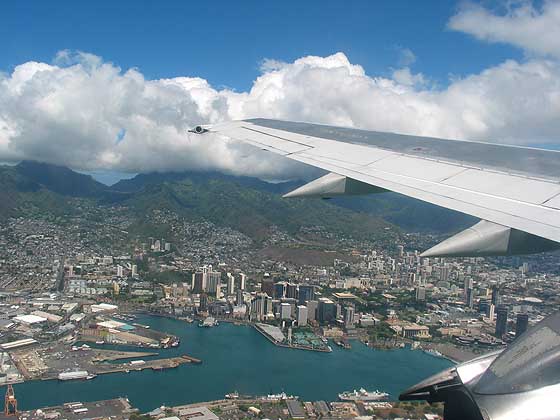Councilman Ernie Martin comments on North Shore Sustainable Communities Plan
HALEIWA—Councilman Ernie Martin, representing Oahu District 2, wrote a letter addressing the North Shore community in a recent edition of the North Shore News.
Martin said that one of the most important measures affecting the North Shore is Honolulu City Council Bill 61, which will amend the North Shore Sustainable Communities Plan. The bill aims to present “a vision for the North Shore’s future development consisting of policies, guidelines, and conceptual schemes that will serve as a policy guide for more detailed zoning maps and regulations and for public and private sector investments decisions.”
One of eight planning areas on Oahu, Martin said that in 1970, the population on the North Shore was just over 9,000 people, doubling by 2000 and accounting for approximately two percent of the island’s population. Expected to reach approximately 20,000 by 2035, Martin said the number will be “slightly more than the General Plan’s population distribution policy goal of 1.7 percent of Oahu’s population.”
Development Plans for each area are required by the City Charter and in conjunction with the General Plan and are intended to guide population and land use growth over a 20-year time span. Administered by the Department of Planning and Permitting, development plans for each of the eight areas can be viewed at www.honolulunldpp.org.
Martin said there are several changes being proposed to the North Shore Plan and these proposals can be followed as Bill 61 moves through the Council.
The overarching goal of the North Shore Sustainable Communities Plan is to keep the region’s population—1.7 percent of Oahu total—consistent through the year 2025.
The gist of the plan calls for maintaining North Shore’s rural character, agricultural lands, open space, natural environment, recreational resources, and scenic beauty.
The North Shore Susainable Communities Plan area extends from Kaena Point in the west to Waialee Gulch near Kawela Bay in the east. Oahu’s shoreline defines the northern edge, while Helemano and the slopes of the Waianae and Koolau Mountain Ranges define the southern edge.
While laying the framework for keeping the general “country” feel of the area, the plan allows for future development—as long as it is primarily within the Community Growth Boundary. Created in 2000, the boundary hugs the areas close to the Waialua and Haleiwa towns as well as built-up establishments close to the coast.
Illegal vacation rentals in residential areas are noted in the plan as a concern because they bring crowds, noise, and parking issues. The illegal rentals also decrease the number of available housing units for residents while jacking up the rates for the rest of the existing rental market.
Under the North Shore Susainable Communities Plan, the Haleiwa and Waialua “country towns” will remain the centers of commerce. Large commercial “big box” retailers are prohibited from setting up shop because they go against the rural character of the area.
With the closing of its sugar mill in 1996, Waialua has room for the growth of diversified “quiet” industries such as cold storage, clothing manufacturing, and even computer and software development.
As it is now, agricultural lands make up 45,000 acres, or 60 percent of the North Shore’s total area. In keeping with the community’s desire to uphold its rural character, maintain its connection with the land, and build greater food security, the plan’s directive is to protect and preserve all agricultural lands “regardless of current crop production capabilities.”
Beyond these major themes of keeping North Shore agricultural and scenic, there are many more issues addressed within the Sustainable Communities Plan, including the State Department of Transportation’s “Bike Plan Hawaii,” which will eventually establish bicycle pathways for not only the region but also the rest of the island. This goes hand-in-hand with finding ways to alleviate traffic along the two-lane Kamehameha Highway (the plan opposes adding more lanes).
Other issues include: the shortage of community parks, the need for better shoreline access, preserving natural resources and historic sites, and addressing the technical issues concerning infrastructure. It should all be there. And if it’s not, say something about it.
For those who might be overwhelmed by the 175-page plan, check out the overview here. It summarizes the City Planning Department’s methodology in preparing the report and highlights the proposed revisions to the current North Shore Sustainable Communities Plan, which was last adopted in 2000.
Click here to read the North Shore Sustainable Communities Plan. To view all Sustainable Communities Plans, go to http://www.honoluludpp.org/planning/dpmap.pdf and click on the map.
For more information, call the Department of Permitting and Planning at (808) 768-8007 or visit http://www.honoluludpp.org.
Related Stories:

Development and Sustainable Communities Plans direct Oahu’s future, everyone has a say
North Shore Sustainable Communities Plan sets ‘country’ guidelines, leaves room for some development